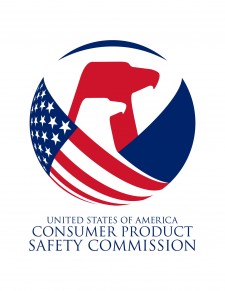E-Scooter-Related Injuries Are on the Rise; CPSC Releases New Study and Public Service Announcement

WASHINGTON, September 24, 2020 (Newswire.com) - The use of micromobility products, including e-scooters, hoverboards, and e-bikes, has grown in popularity in recent years. Users say they are a convenient, cost-effective and fun mode of transportation for short distances.
Unfortunately, injuries and deaths associated with their use have also increased, according to a new report by the U.S. Consumer Product Safety Commission (CPSC).
Following recommended CPSC safety measures while using these modes of transportation can help reduce a consumer’s chances of ending up on a trip to the emergency room. “Remember, many accidents can be prevented by simply slowing down,” says Acting CPSC Chairman Robert Adler. “Always wear a helmet, be aware of your surroundings and be prepared to stop,” he added.
Let’s look at what the data shows.
- There were about 133,000 emergency room visits associated with all Micromobility products from 2017 through 2019.
- Much of the increase in emergency department (ED) visits involves e-scooters, which rose from 7,700 in 2017, to 14,500 in 2018, to 27,700 in 2019.
- A majority of hoverboard injuries seen in EDs (67%) involved children under age 15. By contrast, 58% of injuries involving e-scooters involved people age 25 and older.
- Fractures, followed by contusions/abrasions, are the two most common diagnoses for ED-treated micromobility injuries.
- The most frequently injured body parts are the upper and lower limbs, as well as the head and the neck.
- Most of the injuries are attributed to unspecified falls. Loss of user control, collisions with other motor vehicles, and pavement issues are other notable hazards leading to the injuries.
- CPSC is aware of 41 fatalities associated with micromobility products from 2017 through 2019, though reporting is incomplete at this time.
CPSC is releasing a new Public Service Announcement (PSA) to help consumers to stay safe while riding e-scooters. Ride responsibly to keep yourself and others safe.
Follow these CPSC safety tips.
WEAR A HELMET. A helmet can help protect your head in falls and collisions.
CHECK FOR DAMAGE. Before riding e-scooters, ensure that handlebars, brakes, throttle, bell, lights, tires, cables, and frame are in good condition. Damage to the e-scooter can cause you to lose control and crash.
ALWAYS TEST THE BRAKES. Make sure you know how long it takes to stop the e-scooter, so you are prepared for an emergency stop. Stopping distance can vary significantly depending on the scooter.
SEE AND BE SEEN. E-scooters are small, quick, and silent, making it difficult for others to spot you, especially in parking lots and structures.
· Expect vehicle drivers and pedestrians not to see you; slow down and stay aware of your surroundings.
· Use the bell/horn to alert others.
· Do not make abrupt, unpredictable movements.
BEWARE OF OBSTACLES. E-scooters have small tires, so objects and uneven surfaces can cause them to stop suddenly, throwing you off.
· Always keep both hands on the handlebars and keep items off the handlebars.
· Slow down and lean back when you have to ride over bumps.
· Never ride under the influence of alcohol or drugs.
· Only one person per e-scooter; additional riders can increase the risk and severity of collisions.
NO MUSIC WHILE RIDING. Listening to music while riding is distracting and prevents you from hearing your environment. For example, you could end up crashing into a bicyclist trying to pass you.
DO NOT PERFORM STUNTS. Jumps and bumps can damage the e-scooter and make it unstable. This can pose a risk not only to yourself but also to people around you and to the next rider.
FOLLOW ALL MANUFACTURER DIRECTIONS. Check the e-scooter’s safety information, such as weight and age limits. Many e-scooters are designed specifically for adults because of the size and speed. E-scooter accidents can be deadly, and children are less likely to anticipate and appreciate the hazards.
See CPSC’s safety tips on hoverboards on our website.
Check for recalls at www.cpsc.gov.
About the U.S. CPSC
The U.S. Consumer Product Safety Commission (CPSC) is charged with protecting the public from unreasonable risks of injury or death associated with the use of thousands of types of consumer products. Deaths, injuries, and property damage from consumer product incidents cost the nation more than $1 trillion annually. CPSC’s work to ensure the safety of consumer products has contributed to a decline in the rate of deaths and injuries associated with consumer products over the past 40 years.
Federal law bars any person from selling products subject to a publicly-announced voluntary recall by a manufacturer or a mandatory recall ordered by the Commission.
For lifesaving information:
- Visit CPSC.gov.
- Sign up to receive our e-mail alerts.
- Follow us on Facebook, Instagram @USCPSC and Twitter @USCPSC.
- Report a dangerous product or a product-related injury on www.SaferProducts.gov.
- Call CPSC’s Hotline at 800-638-2772 (TTY 301-595-7054).
- Contact a media specialist.
Source: U.S. Consumer Product Safety Commission